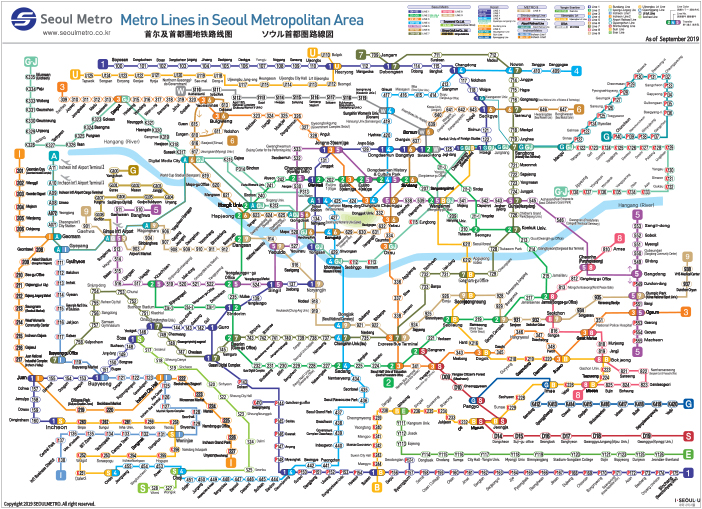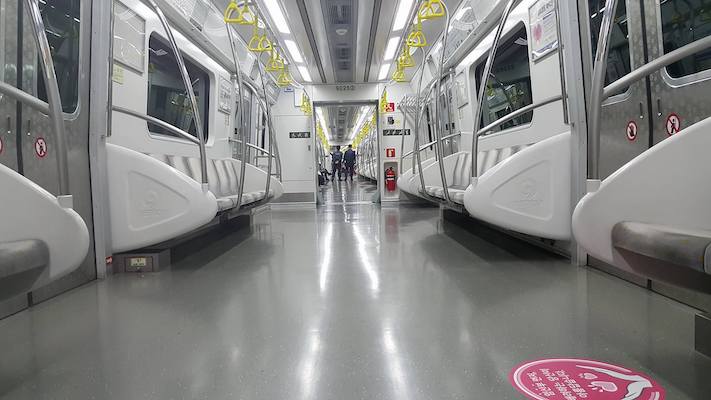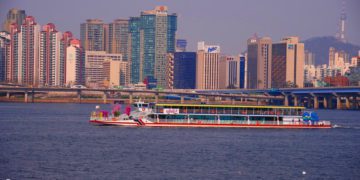Last Updated on 4 years by admin
Seoul Subway is one of the most efficient subway systems in the world for getting around. It is easily navigable despite the huge city limits! The Seoul Subway is the best way to roam around the city of Seoul. At a first glance, you will see a complicated and detailed subway map that’ll make you wanna jump in to the taxi line. But, wait! It’s not as complicated as it might appear. Just take a look at this ultimate Seoul Subway guide – the only guide you’ll need to navigate South Korea’s capital!
There are whopping 22 different lines that make the Seoul subway map resemble a kaleidoscopic doodle instead of a transportation map! However, it still remains the best way of getting around the city. It is affordable, convenient, and of course, the best way to experience the culture of South Korea!
Where’s the Subway?
More often than not, you’ll find the nearest subway station across your accommodation! To locate the subway station closest to you, check out Google Maps, Naver Maps, or a Seoul subway app like Transit, Citymapper, or Subway Korea.
You can even ask about the closest station at the reception or access the Seoul subway website. Everyone uses the subway, so Seoulites will be able to answer your query pretty quickly or you can refer to this Seoul subway guide!
Genreally, subway entrances are covered by staircases and are marked with yellow signs that are pretty much unmistakable.The signage is in both Korean and English language so you’re set on that front. Most subway stations are named for the neighborhood they are located in or a nearby landmark.
Seoul Subway Ticketing Options
You can pay for your ticket in two ways – cash or the T-Money Card.

If you’re using cash, then you’ll need to purchase single journey tickets for all the rides you will take. If the plan is to use the subway for less than five times, it is better to choose the cash payment option. Otherwise, opt for a T-Money Card. Although you need to load and reload the card with cash, you can add enough so that it can last for your entire trip!
Along with being convenient, the T-Money Card also offers savings on each ride and you can transfer to bus from the subway without being charged extra. To use the T-Money Card, you simply have to tap the card while entering and exiting the public transportation system. If you have loaded the card with sufficient cash, you can even use the card to pay the fare for the taxi rides.
You need to pay KRW 4,000 for the T-Money Card (~$3.63) and you can add up to KRW 20,000 in the card. You can get the card from convenience stores, at the airport, and vending machines at subway stations.
How to Reload the T-Money Card?
It’s very simple.
You can get the card reloaded at a convenience store or a vending machine.
To top up the card at vending machine:
- Select the language (English, Korean, Chinese, or Japanese are the available options)
- Place your T-Money Card in the “reloading” plate
- Select the amount of money you want to add to the card on the screen
- Add money to the machine – Only cash is accepted in these vending machines
- Remove the card once the transaction is complete
For topping up the card at a convenience store, you just give the T-Money Card and money to the clerk.
At the end of the trip, if you have a balance of KRW 20,000 or more, you can get a refund at station vending machines. Otherwise, the card remains valid for five years.
Subway Fares
In general, the fare is calculated by distance. The ride starts at KRW 1,250 for up to 10 kilometers (6 miles) and KRW 100 is added for every additional 5 kilometers (3 miles) till 50 kilometers. Beyond 50 kilometers, additional KRW 100 will be added for every 8 kilometers.
If you are exploring the central Seoul, then most likely, you won’t pay anything beyond the base fare.
Using T-Money Card in the Subway System
To use the T-Money Card in Seoul subway system, you need to tap your card at the turnstile everytime you enter or exit. The number on the top of the reader will display the base fare and the bottom digits reflect the remaining balance in the card. If you have insufficient funds, you will nor be able to enter or exit the subway.
If you are having any issues, you can simply move to a side and let others pass. Press the help button at the end of the turnstiles if you need assistance.
Getting Around
Now that you have all the tools for traveling in subway, it is time to conquer the complicated looking Seoul Metro Map! Simply follow these steps in the guide for getting around the Seoul subway system:
- Identify where you are (station and line) and where you want to go, station and line.
- Follow the line from your station to your destination station. If there are any line changes, make a note as you will need to transfer at these stations.
- Count the number of stations in between the two stations on the line you will be following.
- Identify the first line you will be taking and take a note of its final stop. It will help you to identify the direction in which you need to travel.
- Follow the signs in the subway to reach the platform for the first line of your journey.
- Once you are on the right platform, you will see a horizontal map that features the list of all the stops divided into two sections. Check for the direction or the final stop and find your destination station.
- Now, you just have to stand behind the numbered platform lines and wait for your train!
- Monitors in the train announce each stop in multiple languages along with the available transfer stations and what side doors will be opening.
- If you need to transfer, follow the signs to the next line as you get down from the train. No need to tap out for the connecting transfer train unless it is in another station.

Click here for a full-sized image of the map.
Exiting the Subway
During rush hours, it can be difficult to move around the fellow passengers in the train, so you need to make your way to the doors at least one station prior your destination. This way, you can ensure that you won’t miss your station. Just as you tapped the card while entering the station, tap out the card on the exit turnstile.
There are multiple exits at each stations that are numbered. Maps and signage will help you select the most convenient option for your final destination. However, for larger stations, there are more than a dozen exits so if you plan ahead, you can save a lot of time. Most tourist sites have some online presence and their addresses generally mention the subway line and exit numbers for convenience.
Subway Etiquettes
It is best to follow this simple Seoul subway guide so that avoid making an embarrassing cultural faux pas!
- Stand behind the numbered platform lines always!
- Before entering a train car, wait for passengers to exit first.
- If you are not in a rush, stand on the right side of the subway escalators.
- Avoid making loud noises or listening to loud music on subway.
- Don’t use the seatings on the far ends that are reserved for the elderly, pregnant women, and people with disabilities. You can use the other seats but it is still common courtesy to give up your seat for elderly or someone carrying a heavy load.
- If you are carrying a backpack, place it on the luggage shelf or wear it on your chest during the ride.
- It isn’t illegal but it is considered inappropriate to eat on the subway.

Other Relevant Info
Operating Hours
The Seoul Subway operates from 5:30 to 24:00 hours. However, some lines close before this time so you need to pay attention to the announcements at each station. It is the easiest way to avoid potential transportation problems. The subway apps don’t always show the correct operational timings so don’t depend on them completely.
As a tourist, if you don’t like too much crowds, avoid traveling in the subway from 4:30 PM to 8:30 PM as it the rush hour time for localities.
Subway Facilities
Most subway stations have convenience stores and restaurants inside so you can always squeeze in a snack break if needed.

Some subway stations also offer locker facility where you can leave your belongings for 2 to 4 hours! There are different sizes of lockers, each with different fees and you can choose the one the fits your stuff!
Along with escalators, many stations in Seoul offer the facility of elevators so you don’t have to lug around your heavy suitcase.
Additional Tips
- Subway bathrooms are free of cost and are generally located near the subway exits.
- T-Money Card is not exclusive to Seoul and can be used in all Korean cities, even the ones without a metro system. But, you won’t be able to load the cards in other cities.
- If you are planning a cycling tour of th ecity, you can choose to do so on weekends as the bicycles are permitted on the subway on weekends. You can use this facility in the first and the last train cars.
After reading this ultimate Seoul Subway guide, you can enjoy and experience all the city has to offer!



















